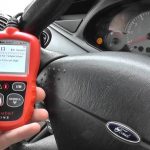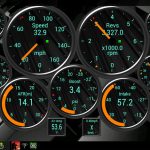In this article, we’ll go over the different kinds of diagnostics codes, including the meaning of OBD-II and pending and maturing codes, and the accuracy of these code readings. We’ll also discuss when a car diagnosis is inaccurate. For instance, the code “9” indicates a transmission-related problem, while the code “8” means that a sensor failed. The meaning of each code is not the same, so you must understand its meaning to properly diagnose your car’s problem.
Diagnostic trouble codes
Most modern cars come with diagnostic trouble codes (DTCs). The trouble code is composed of five characters. The first character is an alphabet code representing a part of the car. The second digit is a generic code, and the third character is a two-digit number ranging from 0 to 99. This number identifies a specific malfunction or problem in the vehicle. In some cases, it can mean anything from a warning light to a complete engine failure.
To access these codes, you need to connect the diagnostic tool to the OBD port, which is usually found somewhere on the dashboard. The OBD port is also often where you connect your GPS tracker. Knowing what each DTC means will allow you to determine what is wrong with your car. You’ll want to look for any codes that appear on your vehicle. Listed below are some of the most common codes for cars and the symptoms they indicate.
When a vehicle’s on-board computer detects a problem, it records the fault as a diagnostic trouble code. These codes are useful for fleet managers because they can send diagnostic trouble codes to drivers in real-time. This information will give them a clearer picture of what’s wrong with their vehicle. By understanding the DTCs, you can fix problems before they cost you a fortune. For example, if you own a fleet of trucks, you can use the code to track the performance of every vehicle.
In addition to reading trouble codes, you can also find specific repair information on your vehicle. In most cases, trouble codes are the result of a malfunction with the car’s emissions control system or sensor circuit. To read these codes, you should be familiar with the place they are stored. Most vehicles have either the Engine Control Module or the Powertrain Control Module (PCM).
Most vehicles come equipped with computers that manage overall vehicle performance. The code also alerts drivers of any possible problems with their vehicle, so it’s important to understand all the codes before consulting a mechanic. When problems are detected, the codes will indicate which parts of the car need attention. This way, you’ll be able to repair or replace them with ease. Once you know what to look for, you can start your troubleshooting process.
Meaning of OBD-II codes
To understand what an OBD-II code means, you must first understand its structure. These codes are composed of a five-digit alphanumeric code that is associated with a specific fault. These codes are generated by the OBD system and are typically triggered by vehicle malfunctions. Depending on your vehicle model, DTC codes can have different meanings. OBD-II diagnostic codes begin with a letter that indicates the fault. For example, the code P0300 indicates a misfire, which means the same failure on all vehicles.
OBD-II diagnostic codes are not easy to understand. First, you need to know the type of code that your car generates. Global codes are those that are adopted by most cars, even though they are not universal. They will usually have the same fault message and may be caused by a malfunction in a different system. Manufacturer-specific codes are ones that are unique to a certain car model. However, you can get some help by using a Bluetooth-enabled smartphone.
OBD-II is now a common diagnostic port on trucks and cars. With this connection, you can easily integrate fleet tracking systems with your vehicle. Motive vehicle diagnostic system is one of the top-rated fleet management and ELD devices. If you are wondering what each DTC means, here are the most common examples:
P stands for powertrain, which covers the engine, transmission, and associated accessories. U stands for network & vehicle integration, which deals with the onboard computer systems. And C stands for chassis, which covers the mechanical system of the vehicle. You can find out which one your vehicle is showing by looking at the code. Regardless of whether you have a car with a C or an OBD-II code, it is important to understand its meaning.
Depending on the type of vehicle you have, a particular DTC may be associated with certain car systems. A code with a C or B indicates the transmission is failing or has a sensor failure. Using an online tool for this purpose is a good idea if you are unsure about the meaning of an OBD-II code. It is important to understand what is indicating on your car’s dashboard and why you’re getting this message.
Meaning of pending and maturing codes
There is a difference between pending and mature diagnostic codes. A pending code indicates that there is no immediate problem with the vehicle and is usually a one-time blip caused by a malfunction or sensor issue. A matured code is not a warning that the vehicle needs repair and will not turn on until a fault is detected in a later operation cycle. Pending diagnostic codes are reported by a diagnostic device but cannot be confirmed by a scantool.
The term “maturing” and “pending” codes refers to failures in systems other than the engine. These codes are not visible to the driver but are retrieved by the OBDII diagnostic link connector. They are referred to as “Pending” and “Matured” because they do not illuminate the check engine light. The pending code is triggered by a malfunction in a component that occurs only after two consecutive warm-up cycles.
The difference between pending and matured diagnostic codes is important to understand how the codes are used. Pending codes are the same for different auto manufacturers, while matured codes are used for different automakers. In general, the first code to be displayed is P0420, which indicates a catalytic converter problem. The second type of code is called “matured” and is the most common type of code.
When you see these codes, you should know what they mean. A pending diagnostic code means that a diagnostic test failed in the previous or current operation cycle. If the test runs again, a mature DTC will show the status as “TestFailedThisOperationCycle.”
Accuracy of diagnoses codes
The accuracy of diagnostics codes depends on several factors. First, the diagnosis code must accurately depict the length of time a patient spent within a typical health service area. The accuracy of diagnosis codes is affected by several factors including medical record legibility, physician documentation, and clinical coding experience. Furthermore, errors can occur due to miscoding or classification system limitations. Accurate diagnoses codes can help in making medical decisions. However, a high degree of accuracy does not mean the codes are useless.
Another factor that influences the accuracy of diagnostics codes is the type of disease they are assigned to. Some codes are more accurate than others, and are better suited for screening potential study participants than others. However, researchers may choose to use less accurate codes in combination with other measures. For instance, codes from one occasion can be compared with test results from another to increase the accuracy of disease classification. For instance, researchers may want to identify patients with stroke for an expensive intervention study. Accuracy of diagnostics codes is low in ICD-9, but there are several ways to improve their accuracy.
ICD codes have become a major tool in health care, and their accuracy is of utmost importance. It is used in many different applications, including reimbursement, clinical research, and policymaking. Therefore, understanding and considering their accuracy is critical for improving their use. This knowledge helps users evaluate the applicability of a code and its limitations. And it allows for better decisions. While accuracy is not the sole criterion of ICD, it is a major concern for many health care professionals.
A study in France has found that ICD-10 diagnostics codes are highly accurate when used to identify systemic sclerosis in patients. The study analyzed a hospital database of Toulouse University Hospital, a tertiary medical center serving a population of 2.9 million people. The data included patients who were discharged with an ICD-10 diagnosis code of SSc and were seen between 2010 and 2017.






